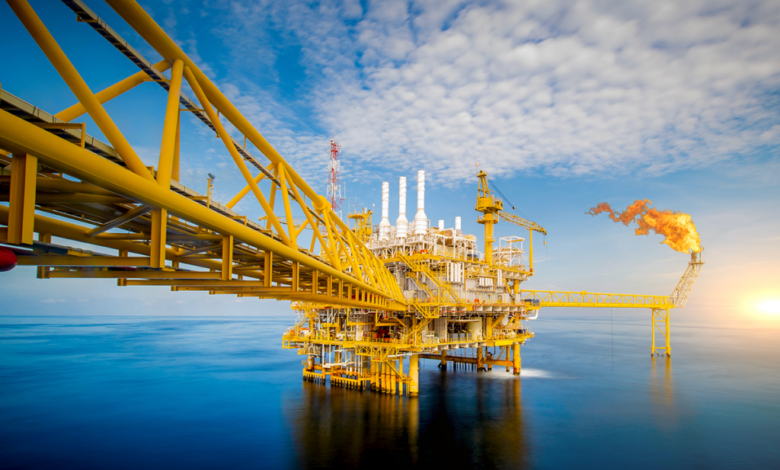5 Tips to Prevent Machinery Accidents Offshore

The vast and volatile environment of offshore operations presents unique challenges, especially when it comes to machinery safety. The complexity and heavy reliance on machinery for offshore activities make it a hotbed for potential accidents, which can lead to severe injuries, costly downtime, and even loss of life. According to the Bureau of Safety and Environmental Enforcement, machinery malfunctions are among the leading causes of offshore incidents, emphasizing the need for stringent safety measures.
In this article, we delve into five critical tips to prevent machinery accidents offshore, aiming to safeguard the lives of those braving the high seas for their livelihoods and the integrity of the machinery they operate.
Regular Maintenance and Inspections
Routine checks are the backbone of machinery safety offshore. A staggering 70% of equipment failures are due to inadequate maintenance, highlighting the dire need for regular inspections and maintenance. A comprehensive maintenance plan should encompass:
- Visual inspections to catch any apparent issues before they escalate.
- Functional tests to ensure all machinery operates as intended.
- Preventive maintenance schedules tailored to each piece of equipment’s operational demands and environmental exposure.
A notable instance where regular maintenance averted a potential disaster involved an offshore drilling rig where a critical valve malfunction was identified during a routine check, allowing for immediate repairs before it could lead to a catastrophic blowout.
Training and Certification for Operators
The human factor plays a pivotal role in machinery safety. Proper training and certification for operators are non-negotiable to prevent accidents. Shockingly, a significant percentage of offshore accidents can be traced back to human error, often due to insufficient training. Effective training programs should include:
- Hands-on training to provide real-world experience.
- Simulation-based training to prepare operators for emergency scenarios without the associated risks.
- Continuous education and re-certification to keep operators up-to-date with the latest safety standards and technology.
The difference proper training can make was starkly illustrated when a well-trained crew successfully navigated a potentially disastrous equipment failure without injury or environmental damage, thanks to their comprehensive emergency response training.
Implementation of Safety Protocols
Safety protocols are the blueprint for accident prevention offshore. However, developing and implementing these protocols is only the beginning. Regular drills, safety meetings, and an effective emergency response plan are crucial. The development of safety protocols should involve:
- Risk assessment to identify potential hazards associated with machinery operations.
- Safety meetings and drills to ensure every team member knows their role in maintaining a safe working environment.
- Emergency response plan to prepare for the worst-case scenarios, significantly reducing the time and chaos associated with responding to an accident.
Safety officers play a critical role in enforcing these protocols, with regular safety audits ensuring compliance and identifying areas for improvement. The implementation of comprehensive safety protocols has been shown to reduce the incidence of machinery-related accidents offshore significantly.
Use of Advanced Technology for Safety
In the modern offshore environment, technology offers unprecedented opportunities to enhance safety. From automated monitoring systems that can predict equipment failures before they occur to wearable safety devices that monitor workers’ health and alertness, the potential for technology to prevent accidents is immense. Additionally, remote operation capabilities allow for the safe management of machinery from a distance, reducing the need for human exposure to hazardous conditions.
The integration of advanced technology into offshore safety practices not only helps in preventing accidents but also significantly improves the efficiency and reliability of machinery operations. An example of technology in action is the use of drones for conducting visual inspections of hard-to-reach areas on offshore platforms, drastically reducing the risk of falls and exposure to hazardous conditions for inspection personnel.
In the realm of offshore operations, the importance of preventing machinery accidents cannot be overstated. The consequences of such incidents range from minor injuries to catastrophic events, including the loss of limbs, making it imperative for offshore entities to adopt comprehensive safety measures.
Encouraging a Culture of Safety
Beyond protocols, technology, and training, the foundation of preventing machinery accidents offshore lies in cultivating a culture of safety. This culture is built on the premise that safety is not just the responsibility of the safety officers or management but of every individual on the platform. A strong safety culture has several key characteristics:
- Incentives for safe behavior to motivate adherence to safety practices.
- Open communication channels for reporting safety concerns without fear of reprisal.
- Leadership by example, where management and senior staff members actively participate in safety training and adhere to safety protocols, setting a standard for the entire crew.
Studies have shown that organizations with a strong safety culture experience significantly fewer accidents and near-misses. For instance, a platform that implemented a comprehensive safety incentive program saw a 40% reduction in minor incidents and a 60% reduction in lost-time accidents within a year.
Conclusion
The prevention of machinery accidents offshore is a multifaceted challenge that requires a comprehensive approach. By implementing regular maintenance and inspections, ensuring proper training and certification for operators, developing and enforcing safety protocols, leveraging advanced technology, and fostering a culture of safety, offshore operations can significantly reduce the risk of machinery-related accidents. These measures not only protect the lives and well-being of offshore workers but also safeguard the operational integrity of the machinery they operate and the environment.
The collective impact of these strategies creates a safer offshore working environment, demonstrating a commitment to safety that transcends compliance and becomes a core value of the operation. As the offshore industry continues to evolve, the dedication to preventing machinery accidents must remain paramount, ensuring the well-being of all involved and the sustainability of offshore activities.
Additional Resources
For further information on enhancing offshore safety and preventing machinery accidents, the following resources may be beneficial:
- International Association of Drilling Contractors (IADC) for guidelines on training and certification.
- Occupational Safety and Health Administration (OSHA) for comprehensive safety standards and regulations.
- Center for Offshore Safety for resources on developing safety management systems and fostering a safety culture.
Prioritizing the prevention of machinery accidents offshore through these comprehensive strategies is not just a regulatory requirement but a moral imperative to protect those who venture into the high seas to power our world.



